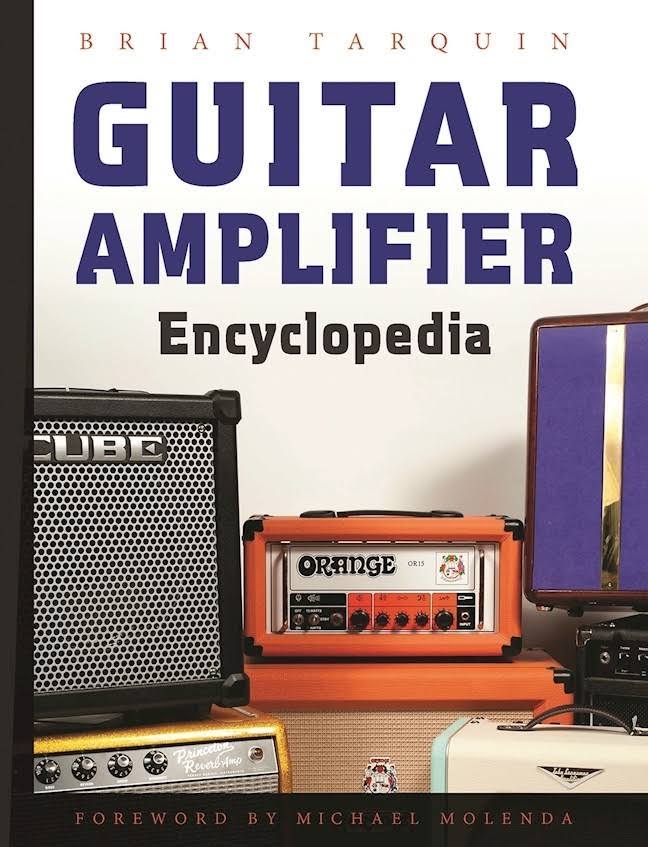 It’s no secret that the editorial staff at LegendaryTones shares a passion about guitar amplifiers. While famous guitarists around the world are mostly known for their association with particular guitars, we feel the amps are the true unsung heroes behind any guitarist’s rig.
It’s no secret that the editorial staff at LegendaryTones shares a passion about guitar amplifiers. While famous guitarists around the world are mostly known for their association with particular guitars, we feel the amps are the true unsung heroes behind any guitarist’s rig.
Jimi Hendrix’ famous Woodstock white Stratocaster had power and authority when being driven through those late 1960’s plexi Marshall stacks. Brian May’s famous homebuilt guitar stung through his Vox AC30s, and Eddie Van Halen’s famous “Frankenstrat” had tone when coupled through a Marshall plexi with reduced voltage from a Variac. Stevie Ray Vaughan was famous for his number one sunburst Strat, but it was that blackface Fender Super Reverb behind him that helped provide the great blend of bite and clarity for his sizzling blues.
The point here is that the amplifier contributes a lot to one’s personal tone. Emmy Award-winning composer, recording artist, producer and overall bad-ass guitarist Brian Tarquin recently released the Guitar Amplifier Encyclopedia, a book that covers a history of numerous amps from the early vintage models, to modern contemporary boutique designs.
Tarquin neatly lays out the Guitar Amplifier Encyclopedia beginning with amplifier history and early designs, before spending dedicated chapters on Fender as well as the British Invasion which covers Vox and Marshall. Tarquin’s writing style is clear and conversational, and the stories shared inside are a pleasure to read.
One of the most popular of boutique brands, Dr. Z, is profiled as well. It’s an insightful chapter where owner Michael Zaite himself provides his thoughts into what drove his passion for his designs. Numerous photographs of his beautiful amps tease the reader throughout the chapter.
As a well-known musician in the industry, Tarquin also takes the time to interview or share stories about many of his industry friends and/or techs for a diverse crew of heavyweights including Jeff Beck, Zakk Wylde, Larry Carlton, and Leslie West. It’s a fun chapter that gives perspective into the personalities of some of these great players.
The Guitar Amplifier Encyclopedia wraps up with its chapter of Amp Designers, which covers Ampeg to Watkins and numerous brands in between. Some makers get more coverage than others, and this is the only section where I wish Tarquin could have expanded further to include more makes and models within each particular given brand. Perhaps a future edition will include even greater coverage.
At 130 pages (albeit in large format), it’s not perhaps as comprehensive of a guide as it could be since it is titled as being an Encyclopedia after all, but there is still plenty to learn. I did find it a little peculiar that some makers were glossed over with rather short sections, such as Mesa Boogie, a company with such a rich history since the late 1960’s, while a more recently known clone amp maker Ceriatone was given a very generous amount of coverage including extensive interview quotes from the company founder.
And while it is obvious that not every maker can be covered, I also found it surprising that there was no coverage of a few classic makers including Hiwatt (famously used by Pete Townshend of The Who, and David Gilmour of Pink Floyd, etc.). Well, other than an earlier mention of the company in the Marshall section that identified Hiwatt as one of many that, “have cloned Marshall’s designs for years.” That point, I would in fact strongly disagree with in terms of both sound and design principles. Hiwatt’s were all-purpose amp designs, built for very clean high-powered signal. While a Marshall and Hiwatt may share the use of EL34 tubes, they have completely different tone stacks and gain structure.
Also missing are some notable newer amp makers including Bogner. Reinhold Bogner’s designs are legendary and I found it odd that his amps were not included.
This brings me to a final point which is that although there are many great anecdotes, stories and knowledge which Tarquin brings to the book, there are also a few errors notably in the Marshall section which I just couldn’t ignore. An example is Tarquin’s reference of the first reissue series Marshall offering being the model JCM 800 2203 and stating that the the JTM 45 and 1959 models came afterward (JTM 45 and 1959 as well as 1987 plexi models were in fact reissued decades before the introduction of the JCM 800 2203 reissue). Another is the reference to the JCM 800 2203/2204 series with vertical inputs being the later version before the horizontal ones – it is indeed the opposite and this is due to Marshall’s implementation of cost-cutting by mounting the input jacks on the circuit board. None of us is perfect, I understand that, but these bits of information matter when you are putting out information to educate readers.
In all, the Guitar Amplifier Encyclopedia still offers a fine overview of the critical backline element for the electric guitar, with personal anecdotes, advice, and thoughts from Tarquin and numerous industry pros. That’s valuable and beneficial to readers. And of course there’s lots of photography throughout which is always fun to peruse. The Guitar Amplifier Encyclopedia is a good read for those who are just getting interested in exploring different amp models, as well as those who already have a foundation but are interested in expanding their own knowledge of what’s available.